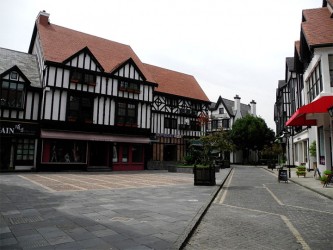By Wade Shepard
Wade Shepard is the author of Ghost Cities of China — a book which chronicles the two and a half years he spent researching the country’s urbanization movement. He is an ethnographic journalist who currently writes for the South China Morning Post and blogs at VagabondJourney.com. Any opinions expressed here are the author’s own.
(Reuters) – Ghost towns tend to start as boomtowns, and contemporary China more than likely has more boomtowns than any other country in history. No economy has ever risen so rapidly and no place has ever built so much so quickly. This rapid growth has resulted in peculiar side effect: ghost cities, everywhere.

Although the term “ghost town” is technically a misnomer in this case. A ghost town is a place that has become economically defunct — in other words, a place that has died. What China has is the opposite of ghost towns: It has new cities that have yet to come to life.
There are nearly 600 more cities in China now than there were when the Communist Party took over in 1949. This large-scale urban transition began in the early 1980s, when rural areas began being rezoned as urban en masse and the city took center stage in China’s plans for the future. In the early 2000s this urbanization movement was kicked into high gear. New urban developments began popping up seemingly everywhere — along the outskirts of existing cities as well as in the previously undeveloped expanses between them. Many cities doubled or even tripled their size within relatively short spans of time. In just 15 years Shanghai alone grew sevenfold and its population increased to more than 23 million from 6.61 million.
China’s broader urbanization movement shouldn’t be thought of as a developmental free-for-all. There is a method behind all of this building and an overarching framework. Ten massive new urban conglomerations called mega-regions have been proposed in strategic locations across the country. These are essentially city clusters of 22 million to more than 100 million people each that are to be connected through infrastructure, economically, and, potentially, even politically.
China’s fiscal policy all but requires local municipalities to comply with this broader urbanization plan. According to the World Bank, local municipalities must fend for 80 percent of their expenses while only receiving 40 percent of the country’s tax revenue. Land sales make up much of the difference, resulting in a buy low, sell high scheme, as municipalities buy up cheap rural land, re-designate it as urban, and then resell it at the high urban construction land rate — pocketing the difference. According to China’s Ministry of Finance, land sales raised $438 billion for China’s local governments in 2012 alone.
When developers purchase these new plots of land, they are prohibited by law from sitting on them. They must build something. While it is commonly thought that getting in on a new development zone early is key to making a big profit, these areas tend to lie far outside the bounds of mature, built-up urban areas. This often means constructing vast apartment complexes, giant malls and commercial streets in places that do not yet have much of a population base to support them.
Building a new city from the ground up is a long-term initiative, a process that China estimates takes roughly 17 to 23 years. By 2020, Ordos Kangbashi plans to have 300,000 people, Nanhui expects to attract 800,000 residents and 5 million people are slated to live in Zhengdong New District. China’s new cities are just that: new.
There is hardly a single new urban development in the country that has yet gone over its estimated time line for completion and vitalization, so any ghost city labeling at this point is premature: Most are still works in progress. But while building the core areas of new cities is something that China does with incredible haste, actually populating them is a lengthy endeavor.




